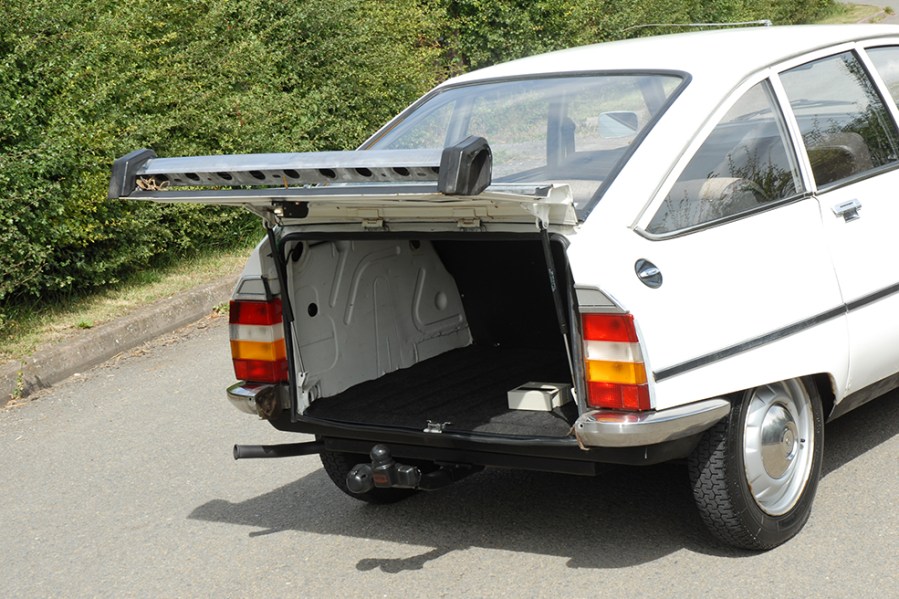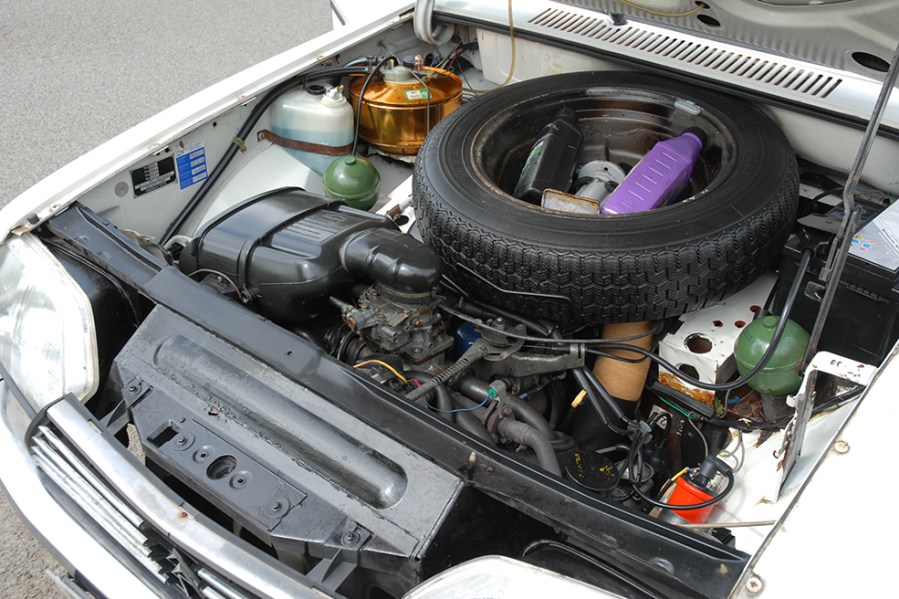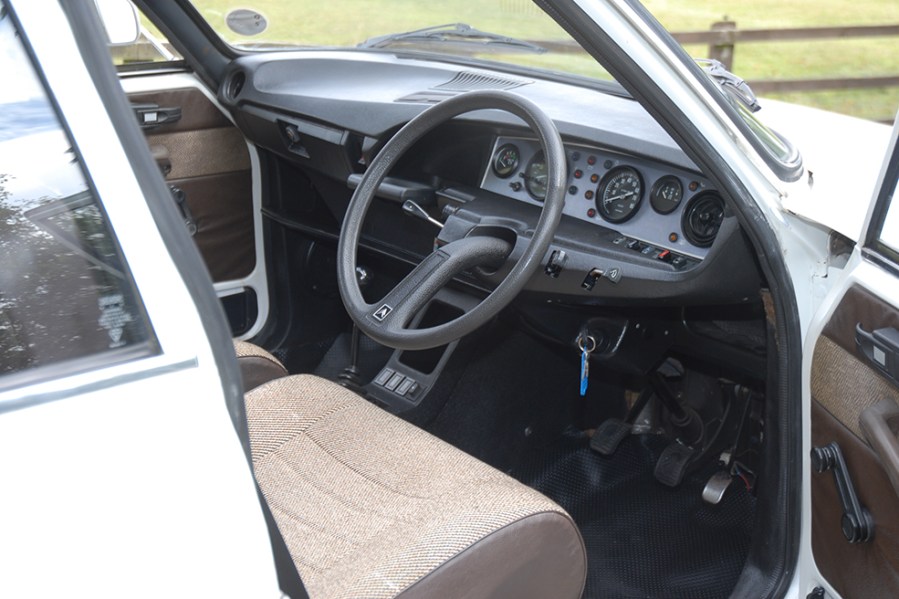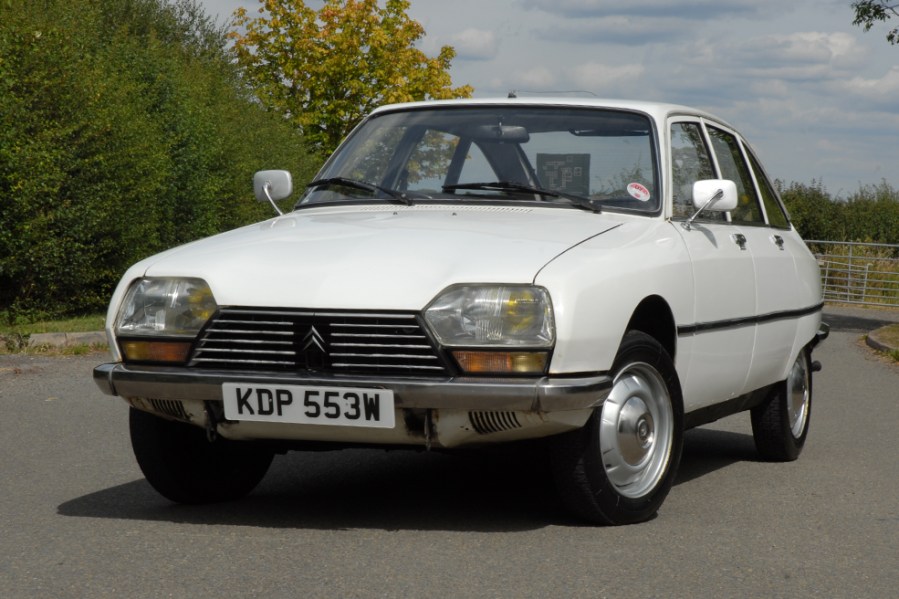Family motoring doesn’t need to be dull, as proved by the characterful Citroën GS. Here’s how to buy one more than fifty years on from its launch
Images: Paul Wager With thanks to: Rob Moss, Chevronic Centre
When Citroën decided to expand its range with a new model to fill the gap between the 2CV and DS – and compete with mainstream family car rivals – it turned to Robert Opron to draw up a design. The resulting design set the Citroën GS apart with a Kamm-tail rear end and saloon bodywork that was far more aerodynamic than anything else on the road.
Following its launch in 1970, the Citroën GS would go on to prove hugely popular: almost 1.9 million would be made before the hatchback GSA arrived to replace it almost a decade later.
The Citroën GS’ small air-cooled engines provided modest power and performance at first but they felt unburstable. Larger units were soon added to the range along with a practical estate variant. There was even experimentation with a Wankel engine in the form of the Birotor, but it wasn’t a success and fewer than 900 were sold.
Inside, the Citroën GS was typically quirky, living up to the French brand’s reputation with a single-spoke steering wheel and rotating drum instruments. Smooth hydropneumatic suspension was a Citroën calling card and provided the sort of ride that still impresses today.
Still managing to make its rivals look stodgy and unimaginative all these years later, the GS really is a fascinating Gallic classic.

Bodywork
Citroën specialists all agree that bodywork is the most important area to check before taking the plunge on a Citroën GS. Rust can occur pretty much anywhere; the majority of cars are likely to have been welded in the past, and major professional restoration can get very expensive. It pays to proceed with caution.
Front wings are prone to rust – especially around the wheel arches – while the lower reaches of the rear wheelarches are also worth checking along with the inner wings.
Examine the bottoms of the doors, the tops of the rear wings (just below the side windows – condensation collects and rot soon takes hold), the front valance, the A-pillars and the windscreen surround. Some replacement panels are still available; a genuine front wing is around £250, with rears available for similar money.
Corrosion can be just as serious underneath any Citroën GS, so get a thorough look at the sills, front and rear floor sections, and the boot floor. Rust can hide in all manner of places, so it is a very good idea to get a prospective purchase up in the air for a proper look.
On the basis that prevention is better than cure, it’s worth considering a rust-free car wax injection for long-term protection. The Chevronic Centre can do the job for less than £1000 at time of writing which, in the long-run, should work out cheaper than major metalwork repairs.

Engine and transmission
What the Citroën GS’s selection of air-cooled engines lack in outright power they more than make up for in character, and the fact they’re considered fundamentally strong is good news.
Along with the usual checks for signs of exhaust smoke or overheating, it’s important to watch for oil leaks; a common problem is hardened seals in the tubes that return oil to the sump (located behind the cylinder heads), but the seals themselves are only a few pounds. The flat-four units are also DIY-friendly for the most part, with just a few jobs proving tricky; changing the spark plugs and points are two examples. Replacing the front exhaust pipes can be a fiddly task, too.
Make sure the oil and filter are changed every 3000 miles or so, and that the cambelt is replaced every three years or 24,000 miles. Ignoring periodic adjustment of the valvegear risks cam wear and a time-consuming engine strip down will be needed to fix it. Keep on top of regular maintenance, however, and a GS engine should cover high mileages without major bother.
Parts for a manual gearbox rebuild can be scarce but the units are generally reliable. Assuming there’s no crunches or whines, or the shift isn’t overly obstructive, there’s not much to worry about. Don’t ignore the signs of an ailing clutch, however, as replacement means removing the engine and it might not be a DIY-friendly job.
The alternative transmission was the semi-automatic ‘Convertisseur’ which can be an acquired taste but enjoyable once its idiosyncrasies become familiar. It is rare on Citroën GS models in the UK, and while parts can be hard to find, the gearbox is not known to be especially troublesome. A check that gearchanges are smooth and prompt is wise, however. On all versions, listen for knocks from failed driveshaft joints.

Suspension, steering and brakes
The hydropneumatic suspension differentiated the Citroën GS from its rivals, and even so many years later the blend of ride and handling remains impressive. Many have been scared of its complexity in the past but there’s no need for such concerns today – hydropneumatic suspension is well understood by specialists, reliable if maintained properly and parts are easy to source. A pair of spheres will set you back around £100–150 per pair, depending on supplier.
Check that suspension rises and falls as it should, and give a once-over for any signs of leaking fluid. As for maintenance, refreshing the LHM fluid every three years or 30k miles is a sensible course of action for which a specialist should charge less than £100. It’s also important to check for subframe corrosion while looking at suspension components; budget upwards of £200 for a good second-hand item if required.
The fully powered all-disc braking system is well up to the job of stopping the lightweight Citroën GS; only the usual inspection for wear and tear is required. Lack of use leads to calipers sticking and handbrake mechanisms seizing-up, but parts are easy to source should an overhaul be needed. Front in-board discs can be awkward for DIY mechanics, however: replacing these entails driveshaft and caliper removal, and even specialists say it can take the best part of five hours.
The unassisted steering set-up in the Citroën GS can be a touch heavy at parking speeds but it’s fine once on the move. There’s nothing to worry about in terms of reliability; wear in ball joints and track rod ends is about the extent of any problems, and replacement parts are easy to find.

Interior and trim
There are a few eccentricities but the Citroën GS cabin is roomy and comfortable, with plenty of space for all the family. If there’s a downside it’s that trim and fittings are quite fragile – the heater controls can be particularly flimsy – so be on the lookout for anything missing or damaged. Most parts can be tracked down, however, with clubs and specialists best placed to help.
Long-term exposure to strong sunshine can wreak havoc Citroën GS seat fabrics but new covers can be found from suppliers in the UK and Europe. Budget accordingly if the seats are looking a bit threadbare.
The electrics in the Citroën GS are as you’d expect and should prove reliable. A thorough check that everything is still working is all that’s required; you can still source new-old stock or second-hand switchgear if required. Make sure that any modifications or upgrades have been done properly and without damage to wiring and connectors.

Citroën GS: our verdict
There is no shortage of family-friendly classics but we’d very much encourage you to consider Citroën’s contender. From the way the Citroën GS looks to its mechanical specification, the GS does things a bit differently – and that’s something to be applauded as far as we’re concerned. Offerings from the likes of Ford and Vauxhall will feel like a safer choice but for sheer character it’s very hard to ignore the GS.
As with any car from this era there’s the spectre of rampant corrosion so a cautious approach is wise, but find an example that’s been cherished and the Citroën’s excentricities will get under your skin.
There are very few examples of the Citroën GS available for sale at any one time so it pays to be patient. The Citroën Car Club and brand specialists are a good starting point for leads, and it’s worth extending your search to Europe if you don’t mind left-hand drive.
Restoration projects are in the region of £700–1000 but you’ll need to be brave – or very handy with a welder – to take on such an example. Upping the budget to nearer £1500 should secure a roadworthy car in reasonable condition that you can be gradually improved.
As an illustration, June 2024 saw Anglia Car Auctions sell a Citroën GS Pallas imported from South Africa and in need of some recommissioning for £1410. Roughly twice that amount will be needed for a good example, with cars in excellent condition fetching £4000–5000. The very best don’t head past £7000 – we reckon that’s pretty good value.

Citroën GS timeline
1970
Citroën GS launched as a four-door saloon
1972
Citroën GS Break estate appears with five doors in the UK; three-door version available elsewhere
1973
A larger 1220cc engine available with a healthier 60bhp; UK cars also get the option of the ‘Convertisseur’ semi-automatic gearbox
Citroën introduces the Birotor with a Wankel rotary engine but it’s short-lived
1975
More models join the range, including the plusher Citroën GS Pallas distinguished by its full-size wheel trims and nicer interior.
Citroën GSX model introduced with 65bhp engine and 98mph top speed. Other GS engines are detuned slightly.
1977
A mild facelift introduces changes to the grille, lights and interior with the dashboard now featuring conventional instruments. The 55bhp 1015cc engine is replaced by an 1129cc 56bhp unit.
1979
With almost 1.9 million examples of the Citroën GS made, a replacement arrives in the form of the GSA














